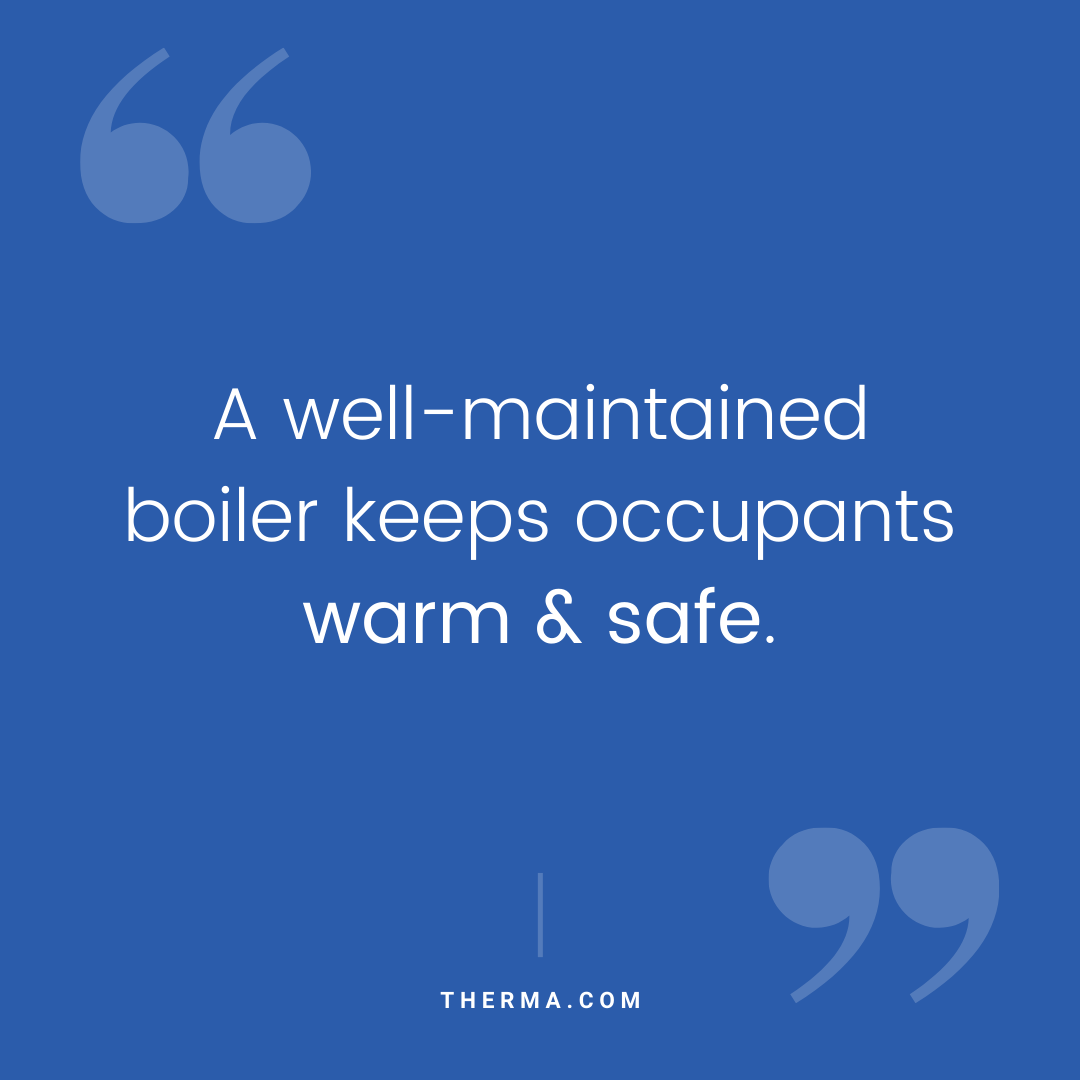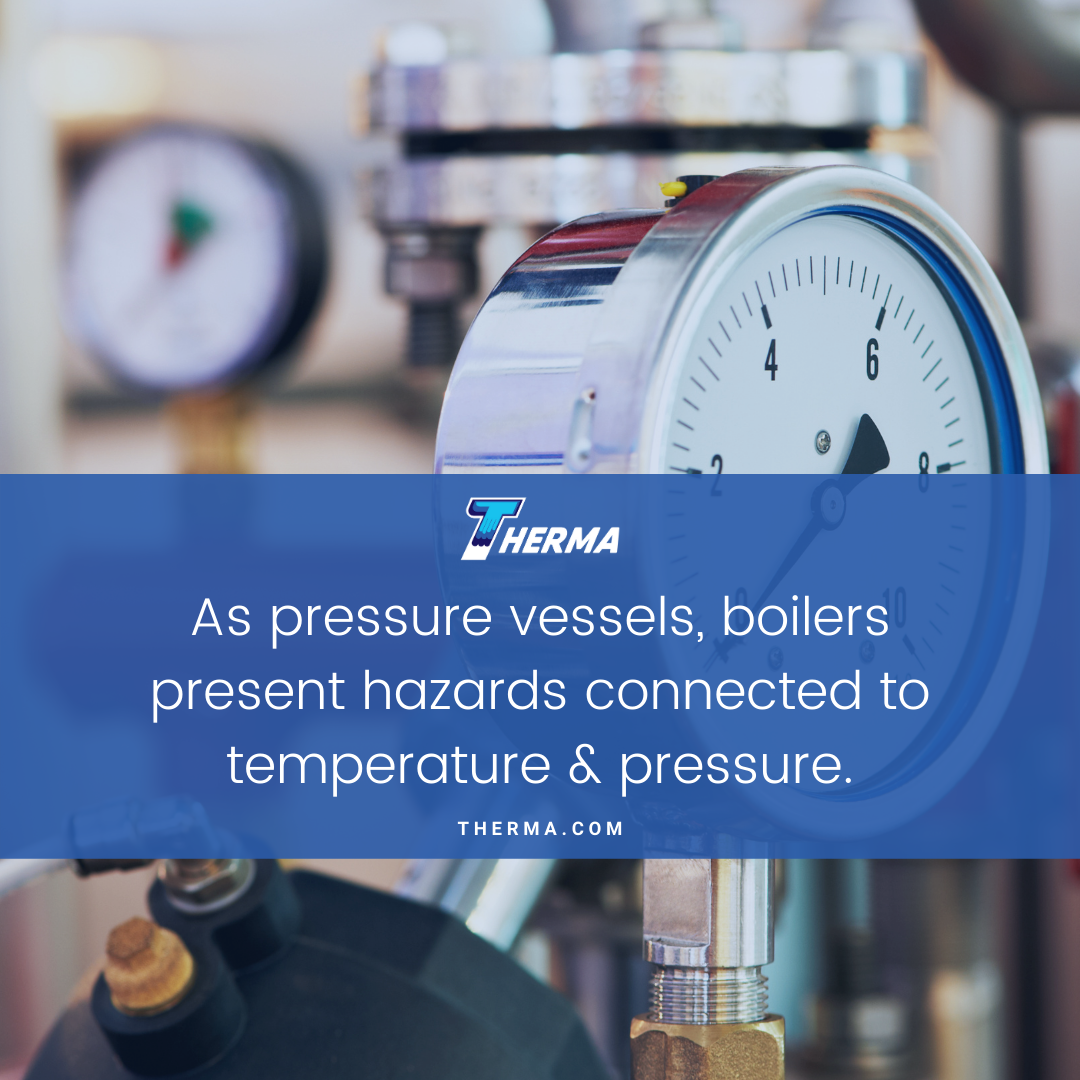Hot water boilers are common equipment for HVAC and building services. As winter comes, a well-maintained boiler keeps occupants warm and safe. Use this quick refresher on operation and safety codes to prepare for the upcoming season.
Hot Water Heating Boilers General Operation
Boilers require a heat source, a method of transferring heat to the water, and controls for maximum efficiency and safety. Designs offer internal or external heat sources.
Heat sources may be electric or combustion driven. Electric heat sources generate heat through resistance. Electric boilers produce no emissions onsite.
Combustion using gas or oil are the most common. If the heat source is internal, a burner ignites a mix of air and fuel. A combustion chamber or furnace contains the combustion process. External heat sources use waste heat from other processes or from a combustion turbine.
Combustion gases transfer heat to the water through the heat exchanger. Several types of heat exchangers used in boilers include:
- Fire-tube boiler: Hot gases pass from the combustion chamber through tubes running through a drum of water.
- Water-tube boiler: Water passes through tubes that run through the hot gases from the combustion chamber.
- Cast iron sectional boiler: The channels for the hot gases run along the outside of castings that hold the water.

Controls for Efficiency
Efficiency is determined by controlling the flow of water, air and fuel.
-
Water control
Longer periods of exposure allow the water to absorb more of the heat, up to an equilibrium point. Higher water flow rates reduce the time available for heat transfer leading to lower temperature water.
However, if there is not enough water flowing through the boiler or if it runs dry, the heat exchanger can overheat. Besides potential damage to the boiler, excessive heat in a pressure vessel creates dangerous conditions.
Some facilities add automatic water feeders to boiler systems. The automatic water feeder adds water to the boiler if sensors or controls indicate a lower than desired water level. This does not replace a low water fuel shut off and operators still need to monitor water levels to verify the equipment is running safely.
-
Combustion control: Air and fuel
Combustion controls adjust the ratio of air to fuel at ignition and within the combustion chamber. The goal for an efficient burn is balancing the two.
Having too much air or too little fuel reduces the boiler’s ability to heat the water as the unused air will carry some of the heat out of the system via the flue. But too much fuel or too little air creates pollution, fuel waste, and dangerous conditions within the boiler.
Safety
As pressure vessels, boilers present hazards connected to temperature and pressure. Six safety features required in ASME BPV Code Section IV address these hazards.
- Pressure
Boilers should have a thermal expansion system. As water heats, its volume increases. The thermal expansion system keeps the increase in water volume from increasing the pressure within the boiler.
Pressure gauges are required for monitoring internal pressures and a pressure relief valve provides a safety release in case the boiler pressure exceeds safe limits.
- Temperature

Thermometers are used to confirm boiler temperatures are controlled. Additionally, two temperature controls are required. The first is the operating control, and the second is a safety shut-off control. An automatic low-water fuel cutoff shuts off the fuel supply when sensors indicate there is low water. This prevents the boiler from overheating.
Sludge, scale and corrosion are also hazards. They can impact the ability of gauges, sensors and connected devices to function as needed. Corrosion can occur on the water or fireside of boiler materials. Chemical corrosion inhibitors, biocides, and scale inhibitors added to the water reduce oxygen and buildup’s impact on the equipment’s waterside.
Corrosion on fireside materials is usually seen from improperly condensing flue gases. The condensate is a combination of sulfur, chlorides and water vapor from combustion and any excess air. It is highly acidic.
Condensing boilers are designed to reduce heat loss by purposefully condensing the flue gases. However, the condensate can damage components of noncondensing boilers. Flue gas temperatures should stay above the dewpoint of the gases in noncondensing boilers.
Not all safety considerations center on the boiler itself. Safe operation, maintenance and inspection depend on clearance around the equipment as well as managing any potential hazards from nearby processes. Properly interfacing external devices or controls with manufacturer-provided controls ensure sensors and safety features will work as expected.
Consistent operation, maintenance and regular inspections keep boilers ready for the increased demands of the colder months.







